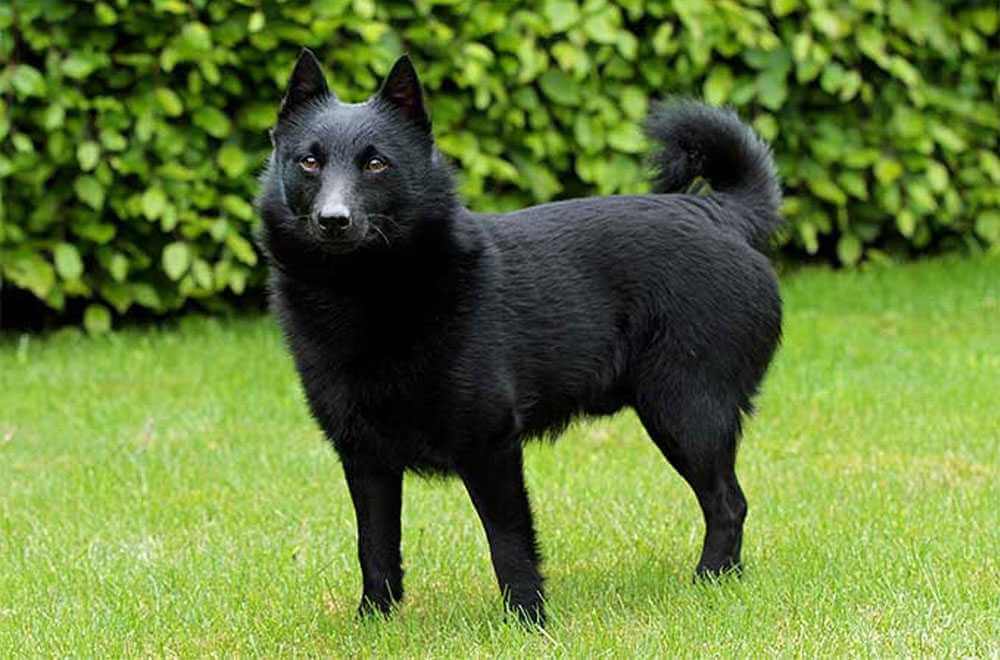A Schipperke is a small Belgian breed of dog that originated in the early 16th century. There has been a long informal debate over whether this type of dog is a spitz or miniature sheepdog. In their home country of Belgium, they are considered a small shepherd.
Description
Their small, pointed ears are erect atop the head. Schipperkes are double-coated with a soft, fluffy undercoat that is covered by a harsher-feeling and longer outer coat. One of the breed characteristics is a long ruff that surrounds the neck and then a strip trails down towards the rear of the dog. They also have longer fur on their hind legs called culottes. The breed is black, or blonde (some blondes have a silkier coat), and the coat is shiny.
Dogs of this breed usually weigh 3–9 kg (6.6–19.8 lb). Puppies are born with tails in different lengths. However, they are among those dogs with the natural bobtail C189G mutation, In Canada and the United States, the tail is usually docked the day after birth. In countries that have bans on docking, Schipperkes display their natural tails, which vary in type.

Known for a stubborn, mischievous, and headstrong temperament, it also chases small animals. The Schipperke is sometimes referred to as the “little black fox”, the “Tasmanian black devil”, or the “little black devil”. They are naturally curious and high-energy dogs and require ample exercise and supervision. Schipperkes are very smart and independent; and sometimes debate listening to owners, instead choosing to do whatever benefits them the most, and are not necessarily the proper dog for a first-time dog owner. Schipperkes require training and secure, fenced-in space in which to run. They are formidable barkers and can be aggressive with other dogs. Otherwise, they are overall good dogs, and their personality is a matter of how they are raised, and who they are around. They often have a high prey drive, focusing on rodents and small animals, and can excel at obedience and agility competitions.
History
Schipperkes were first recognized as a formal breed in the 1880s, their standard being written in 1889. Much of what is known of their origins and early history comes from Chasse et Pêche (French for “Hunting and Fishing”) magazine, articles from which were translated into English and published by the English magazine The Stockkeeper.
The breed name of “Schipperke”, in English-speaking nations, was thought to mean “little boatman”. However, while they were occasionally seen on barges it was not their original or primary function, and in the areas of Leuven and Brussels “scheper” (which sounds similar to “Schipper”; a German Shepherd dog is known in Dutch as a “Duitse scheper”) was the word for shepherd, making the name translate as “little shepherd”.
Before the name “Schipperke” was officially taken, the breed was also known colloquially as “Spits” or “Spitzke”, a name commonly used to describe a small dog with pointed ears. They were also occasionally called “Moorke”, meaning “little black animal”. Schipperkes are widely referred to in the United States, albeit erroneously, as “Belgian barge dogs” or “Belgian ship dogs.” However, their history dates to a seventeenth-century black shepherd dog commonly called the Leuvenaar, a 40-pound dog often found in the Louvain region of Belgium and employed to guard flocks and transport. These dogs are the foundational breed for both the modern, and smaller, Schipperke and the modern, and larger, Black Belgian Shepherd Dog, also known as the Groenendael.
